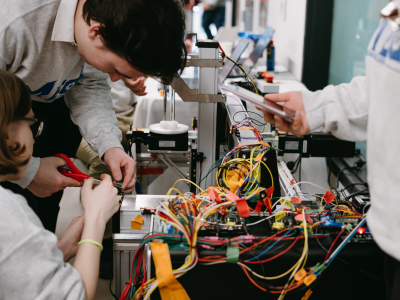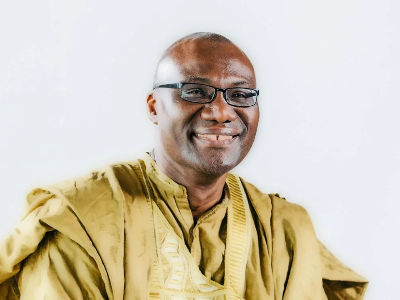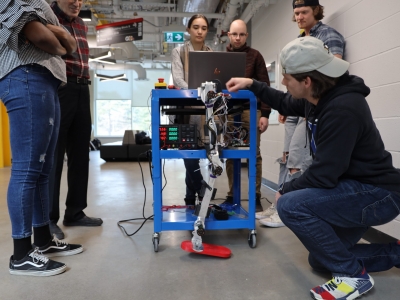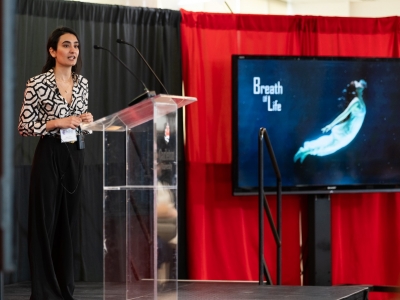
Carleton Civil Engineering graduate David Radcliffe (BEng/90) serves as the Vice President of Real Estate and Workplace Services for Google Inc. Since 2006, David has been responsible for managing Google’s global real estate portfolio and workplace-related services.
We recently had the chance to speak with David to discuss his position with Google, his experiences at Carleton, and how the built environment plays a vital role in employee innovation and success.
Carleton University – How did you initially become interested in civil engineering?
David Radcliffe – For as long as I can remember, I wanted to be an engineer. From the earliest of ages I was interested in how things work, with “reverse engineering” being a big part of the learning process. If it had mechanical or electrical parts I’d take it apart, much to the chagrin of my father, as it wasn’t until I was quite a bit older that I actually learned to put things back together. When I wasn’t deconstructing things I was outside doing the opposite. Our summers were spent building forts in trees, underground and everywhere in between. It was this love for creating that led me into engineering.
CU – What originally drew you to study at Carleton?
DR – While I ended up choosing to pursue civil engineering, Carleton originally caught my eye because of its aerospace program. At the time I wasn’t exactly sure what specialty I wanted, so it was important that I studied somewhere that had engineering programs structured with an extended common core. I felt that it would provide me with plenty of opportunity to experience every aspect of engineering and find the one that best suited my passions and strengths, which proved to be the case.
CU – Are there professors you recall as influential to your education?
DR – I have many fond memories of Carleton professors, especially those from my fourth year civil engineering courses. There were only a dozen or so of us in my graduating class so each lesson was intimate and hands on, which gave us all very personal and 1:1 attention. Professor Gary Suter was my fourth year advisor – a leader in the engineering of masonry structures. He gave me a real appreciation for the opportunity to blend new and old materials without compromising design intent. This is an esthetic I continue to employ in the built environments we create for Google around the world today.
CU – Very quickly after graduation you pushed the boundaries of your civil engineering education towards the real estate sector, how did your time at Carleton prepare you for your career?
DR – My journey into real estate was a very natural extension of my engineering training. As a corporate real estate executive, I’m tasked with ensuring our company has the right real estate in the right place at the right time to meet the needs of the business. Since Carleton gave me a very deep appreciation for so many other disciplines beyond just my civil coursework, I found myself prepared to ask the right questions to get to efficient, cost effective and innovative solutions.
While we are responsible for creating Google’s infamous people spaces, we also develop highly specialized facilities that are used to create the next generation of products and services the world has not even thought about yet – whether it be R&D spaces for autonomous vehicles, robotics labs, facilities to advance the R&D of high altitude balloons, or life science and biotech facilities. I learned early on that assembling each of these spaces takes teams of civil (structural and environmental), mechanical, and electrical engineers to make it all happen.
CU – At Carleton we consider what happens outside the classroom (competitions, exchanges, hands-on/applied research, co-op opportunities) to be an increasingly pivotal part of the educational experience. In what ways did experiential learning prepare you for your career?
DR – Experiential learning shows students how the real world works. That hands-on knowledge and understanding became hardwired into my DNA before I graduated, which gave me a huge advantage – and I feel the same would be true for any Carleton grad. While the subject matter we learn in class may quickly become outdated, the ability to problem solve, engage with a wide variety of cross disciplinary teams and understand that most problems have incomplete data sets and multiple potential outcomes will never change.
CU – Google is known for its unique locations and spaces. What do you see as the connection between work space and productivity?
DR – Innovation is the key to long term survival in the tech industry. While can’t schedule innovation, at Google we look to build facilities and environments which promote and foster collaboration – a key ingredient of successful innovation. In our building designs we are trying to remove the traditional friction that is created throughout the built environment to accelerate learning and information flows between our employees. The fact that the spaces turn out to look playful is really just a byproduct of this intent.
CU – Of the many locations you’ve helped launch for Google, which is your favourite and why?
DR – That’s tough to answer, it’s like asking me which of my kids is my favourite. Today we manage real estate in hundreds of different cities spread across 70 countries around the world and each one has unique characteristics of which I’m proud. Some of the more complicated transactions we completed include the purchase of the 3M SqFt Port Authority building in NYC, which at the time was the largest real estate transaction completed in the world that year. We also recently secured a long term lease of NASA, Moffett Federal Airfield which includes two runways and three historic blimp hangars.
CU – What are some of the ways that you and Google try to foster a healthy work environment for its employees?
DR – We work hard to create the healthiest, most productive work environments possible for Googlers around the world. To do that, we approach buildings as living systems, designing in natural light and clean air, designing out harmful man-made chemicals, and using natural resources more intelligently. Our approach goes hand-in-hand with our commitment to designing buildings that are sustainable for local and global ecosystems.
We also aim to create and manage a workplace that enables Googlers to perform at their best and feel great when they go home. That includes everything from how we design our spaces, to creating food experiences, providing transportation and fitness options, to making sure our building facilities continue running as efficiently as possible and that the buildings themselves are made of healthy materials.
CU – What criteria do you look for when choosing a Google location?
DR – At the most strategic level we are looking to be where the best talent in the world is located and wants to live. Once we’ve identified the labor markets we search for facilities that will allow us to create a differentiated experience – something that will inspire employees and speak to our core values, as well as give us room to expand over time. When it doesn’t exist we build it from the ground up.
CU – Given Google’s investment in dynamic locations and employee services, what are your thoughts on telecommuting?
DR – Providing technology to work remotely can be an important tool for any company, which is why we enable every Googler to work from anywhere at anytime. That being said, it’s important to note the benefits you get from physical and social connections. Whether it’s a spontaneous whiteboarding session, a chat through a problem in the hallway or over lunch, or throwing ideas back and forth at your desk area – some of our best ideas come to light through the casual collisions that occur in our environments.
CU – Retaining exceptional employees is a challenge for many companies, especially those in Silicon Valley. What do you think the relationship between employee satisfaction and their physical work environment is?
DR – At Google, our goal is to create workplaces that enable and inspire our employees to be as productive, creative and inspired as possible. We want them to walk into their work environment and feel inspired to think of the next big idea, whether it’s over a casual lunch conversation, through bumping into someone in the hallway, or while they’re focused and doing heads-down work at their desk. When they’re happy at work and performing at their best, that’s when their work, energy and creativity will really soar.



